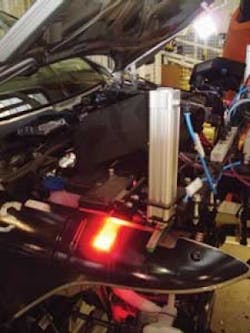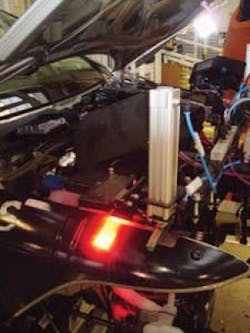UNMANNED VEHICLES: 3-D display uses dual LCD panels
Although 3-D motion pictures have only recently regained popularity, the principles behind the technology date back as far as the 1830s. Then, Sir Charles Wheatstone, an English scientist described how, by providing a different image to a viewer’s left and right eyes, a person perceives a stereo depth image.
Many different methods exist to generate these disparate images. These include technologies that use passive red-cyan or polarized glasses, alternate frame sequencing methods that require active shuttered glasses, and auto-stereoscopic technologies such as lenticular displays.
While these technologies have all found roles in both consumer, medical, and military displays, the systems to some degree compromise luminous intensity, frame rate, resolution, viewing angle, or a combination of these in their implementations. For example, while glasses-based systems remain the most popular form of 3-D display technology, current 3-D TV implementations are based on field-sequential shuttered glasses. When these glasses are used for stereo displays, field sequential images (at half frame resolution) are projected at 60 Hz, resulting in a need to produce LCDs with a 120-Hz refresh rate.
To overcome this high refresh rate while providing the user with lower-cost polarized glasses, Polaris Sensor Technologies (PST; Huntsville, AL, USA; www.polarissensor.com) recently demonstrated a novel stereo 3-D display that uses dual LCD panels in a 1920 × 1200-pixel monitor with a 60-Hz refresh rate (see Fig. 1).
Because two LCD panels are used, they must be accurately aligned and rear illumination with a high-brightness backlight is required. For this reason, PST contracted Rockwell Collins (Cedar Rapids, IA, USA; www.rockwellcollins.com) to develop a custom high-brightness backlight for the display and used Rockwell Collins’ Dry Film Optical bonding technology to maximize performance.
To produce a stereo image, light from the backlight first passes though a polarizer. Light polarized at 45° then passes though the first LCD and through a second polarizer where it is polarized again at -45°. Light then passes through the second LCD panel where the image is displayed to the viewer.
Both left and right images are first displayed simultaneously on the rear LCD panel. Pixels in the display’s front panel are then modulated so that the output image is a left image at one linear polarization state and a right image at another. This occurs when each front panel’s pixel polarization state is rotated the appropriate amount to deliver the correct percentage of light to each eye.
To direct the appropriate image to each eye of the viewer, passive linearly polarized glasses must be worn. This allows 1920 × 1200-pixel color images to be delivered to each eye of the viewer simultaneously on the display’s 17-in. monitor.
PST developed and integrated a custom input/output board into the display that accepts two DVI inputs to display stereo images at video rates. Computer applications that are programmed to produce stereo 3-D using OpenGL then provide the necessary synchronized video when displayed using Nvidia FX graphics cards. Both views are updated at 60 frames/s.
“One of the most important applications for this technology,” says Larry Pezzaniti, chief technical officer with PST, “is in teleoperated robotic systems that are used to handle improvised explosive devices.” In such systems, he says, the lack of depth perception, sense of scale, and limited field of view of 2-D cameras makes robotic manipulation very time-consuming and risky, especially when the robot is outside of the user’s field of view.
PST is working with QinetiQ Foster-Miller (McLean, VA, USA: www.foster-miller.com/lemming.htm), the manufacturer of the TALON Robot system, on a stereo vision upgrade kit. This kit includes a gripper arm stereo camera, a mast stereo camera with pan-tilt-zoom, and a stereo display mounted in the operator control unit. The stereo cameras and display are drop-in replacements for the standard cameras and display.
According to Pezzaniti, a prototype of the system has already been demonstrated to Explosive Ordnance Disposal (EOD) technicians at Indian Head, Ft. Leonard Wood, Picatinny, and Hill Air Force Base (see Fig. 2).
FIGURE 2. Telerobotic systems incorporating stereo cameras are being evaluated by soldiers at Ft. Leonard Wood as a means to provide Explosive Ordnance Disposal technicians a more effective way to deal with improvised explosive devices.


